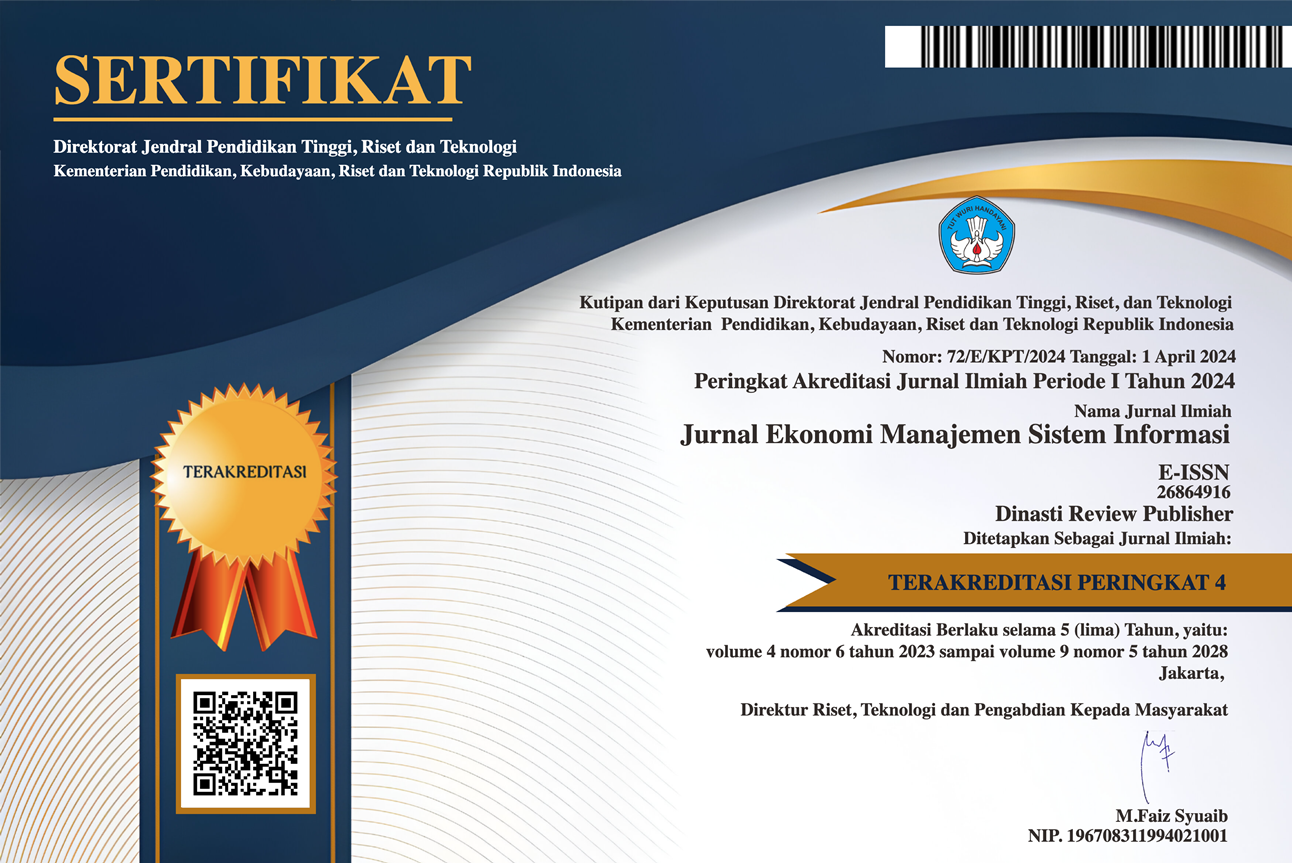The Role of Emotional Branding in Echancing Customer Satisfaction and Loyalty
DOI:
https://doi.org/10.38035/jemsi.v6i5.4976Keywords:
Emotional Branding, Customer Satisfaction, Customer Loyalty, Mediation, Indonesia, PLS-SEMAbstract
The increasing competitiveness of global and regional markets has necessitated a shift from traditional, functional branding toward strategies that foster emotional connections with consumers. This study aims to examine the influence of emotional branding on customer satisfaction and customer loyalty, with customer satisfaction analyzed as a mediating variable. A quantitative approach was adopted, and data were collected from 250 consumers in Indonesia who have engaged with brands employing emotional branding strategies. Using partial least squares structural equation modeling (PLS-SEM), the findings reveal that emotional branding has a significant positive effect on both customer satisfaction and customer loyalty. Furthermore, customer satisfaction significantly mediates the relationship between emotional branding and customer loyalty. The results suggest that emotional branding not only directly fosters loyalty but also enhances satisfaction, which in turn leads to stronger and more sustainable loyalty. The study contributes to the emotional branding literature by validating these relationships in the emerging market context of Indonesia. It also provides managerial insights, emphasizing the need for brands to ensure that emotional engagement is consistently supported by satisfying customer experiences to optimize loyalty outcomes.
References
Capgemini Research Institute. (2023). What matters to today’s consumer: Emotional connections, trust, and loyalty. Capgemini. Retrieved from https://www.capgemini.com
Chin, W. W. (1998). The partial least squares approach to structural equation modeling. In G. A. Marcoulides (Ed.), Modern methods for business research (pp. 295–336). Lawrence Erlbaum Associates.
Dick, A. S., & Basu, K. (1994). Customer loyalty: Toward an integrated conceptual framework. Journal of the Academy of Marketing Science, 22(2), 99–113. https://doi.org/10.1177/0092070394222001
Fornell, C., & Larcker, D. F. (1981). Evaluating structural equation models with unobservable variables and measurement error. Journal of Marketing Research, 18(1), 39–50. https://doi.org/10.1177/002224378101800104
Fournier, S. (1998). Consumers and their brands: Developing relationship theory in consumer research. Journal of Consumer Research, 24(4), 343–373. https://doi.org/10.1086/209515
Gobé, M. (2001). Emotional branding: The new paradigm for connecting brands to people. Allworth Press.
Hair, J. F., Hult, G. T. M., Ringle, C. M., & Sarstedt, M. (2019). A primer on partial least squares structural equation modeling (PLS-SEM) (2nd ed.). Sage Publications.
Motista. (2023). The value of emotional connection for brands. Motista Research. Retrieved from https://www.motista.com
Oliver, R. L. (1999). Whence consumer loyalty? Journal of Marketing, 63(Special Issue), 33–44. https://doi.org/10.1177/00222429990634s105
PwC. (2023). Experience is everything: Here's how to get it right. PricewaterhouseCoopers. Retrieved from https://www.pwc.com
Smith, A. (2021). How Gen Z consumers respond to emotional branding in social media marketing. Journal of Digital Marketing Research, 6(2), 120–138.
Thomson, M., MacInnis, D. J., & Park, C. W. (2005). The ties that bind: Measuring the strength of consumers’ emotional attachments to brands. Journal of Consumer Psychology, 15(1), 77–91. https://doi.org/10.1207/s15327663jcp1501_10
Yao, X. (2020). Emotional branding and customer loyalty: Mediating effect of customer satisfaction. Journal of Consumer Marketing, 37(7), 731–741. https://doi.org/10.1108/JCM-12-2019-3528
Zeithaml, V. A., Berry, L. L., & Parasuraman, A. (1996). The behavioral consequences of service quality. Journal of Marketing, 60(2), 31–46. https://doi.org/10.1177/002224299606000203
Zhao, X., Lynch, J. G., & Chen, Q. (2010). Reconsidering Baron and Kenny: Myths and truths about mediation analysis. Journal of Consumer Research, 37(2), 197–206. https://doi.org/10.1086/651257
Downloads
Published
How to Cite
Issue
Section
License
Copyright (c) 2025 Wikrama Wardana

This work is licensed under a Creative Commons Attribution 4.0 International License.
Hak cipta :
Penulis yang mempublikasikan manuskripnya di jurnal ini menyetujui ketentuan berikut:
- Hak cipta pada setiap artikel adalah milik penulis.
- Penulis mengakui bahwa Jurnal Ekonomi Manajemen Sistem Informasi (JEMSI) berhak menjadi yang pertama menerbitkan dengan lisensi Creative Commons Attribution 4.0 International (Attribution 4.0 International CC BY 4.0) .
- Penulis dapat mengirimkan artikel secara terpisah, mengatur distribusi non-eksklusif manuskrip yang telah diterbitkan dalam jurnal ini ke versi lain (misalnya, dikirim ke repositori institusi penulis, publikasi ke dalam buku, dll.), dengan mengakui bahwa manuskrip telah diterbitkan pertama kali di Jurnal Ekonomi Manajemen Sistem Informasi (JEMSI).











































































